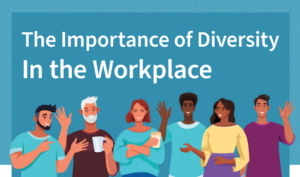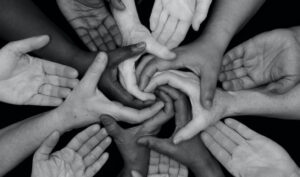
The Undeniable Impact of Workplace Diversity [Infographic]
Workplace diversity is not a new topic. And yet, the world of work hasn’t made nearly enough progress in gender, cultural, and ethnic diversity. The

Workplace diversity is not a new topic. And yet, the world of work hasn’t made nearly enough progress in gender, cultural, and ethnic diversity. The

We’ve recently come to understand how diversity affects us all — in society and the workplace. But there are forms of diversity we don’t talk

How will the remote work era impact your 2021 DEI efforts? How will you keep the promises made around diversity, equity, and inclusion? Before remote

It’s an understatement to say the past several months have been a troubling time for those of us committed to racial equity and broader diversity,
The evidence overwhelmingly supports the business case for workforce diversity. So why are companies still failing to achieve their diversity goals? Diversity has become a

In an era where more people than ever are fighting for social justice, why do job descriptions still contain hidden bias? And what is the

As the spotlight has brightened on racism. In response to recent miscarriages of justice, the emphasis on identifying racism within other aspects of life has

According to a major study by Accenture, a direct link can now be drawn between a company’s overall profitability and its inclusiveness of people with

When I think about the words “inclusion” and “tolerance,” I see a large chasm. In regards to the modern-day workforce, diversity and inclusion mean accepting

Organizations that take the opportunity to be more inclusive are winning. Companies in the top quartile for gender diversity on their executive team are 21

Raise your hand if “diversity” or “inclusion” are buzzwords at your organization. Almost every HR and business leader we talk to is focused on D&I.

Smart leaders know a lot is gained by creating safe opportunities for important conversations on sensitive subjects. Here’s how to do it right.

Workplaces can make inclusion a priority and help team members learn how to address controversial topics in a respectful way.

Workplaces can make inclusion a priority and help team members learn how to address controversial topics in a respectful way.

Inclusion leads to happier workers and a more profitable economy. On #WorkTrends this week we discussed the ways companies can be more inclusive.

Inclusion leads to happier workers and a more profitable economy. Join #WorkTrends this week to discuss the ways companies can be more inclusive.
Almost every organization has a firm understanding of how important diversity is. There is an abundance of research out there that confirms more diversity results
At many corporations, diversity is viewed as a “nice to have.” But according to Valerie Grillo, chief diversity officer at American Express, their commitment to
Sunday night was the 88th broadcast of Academy Awards. And, even if you didn’t watch it, then you know that not one person of color
It wasn’t exactly the romanticized version of backpacking through an exotic land, especially if you consider a cheap roller suitcase a backpack, which unfortunately I